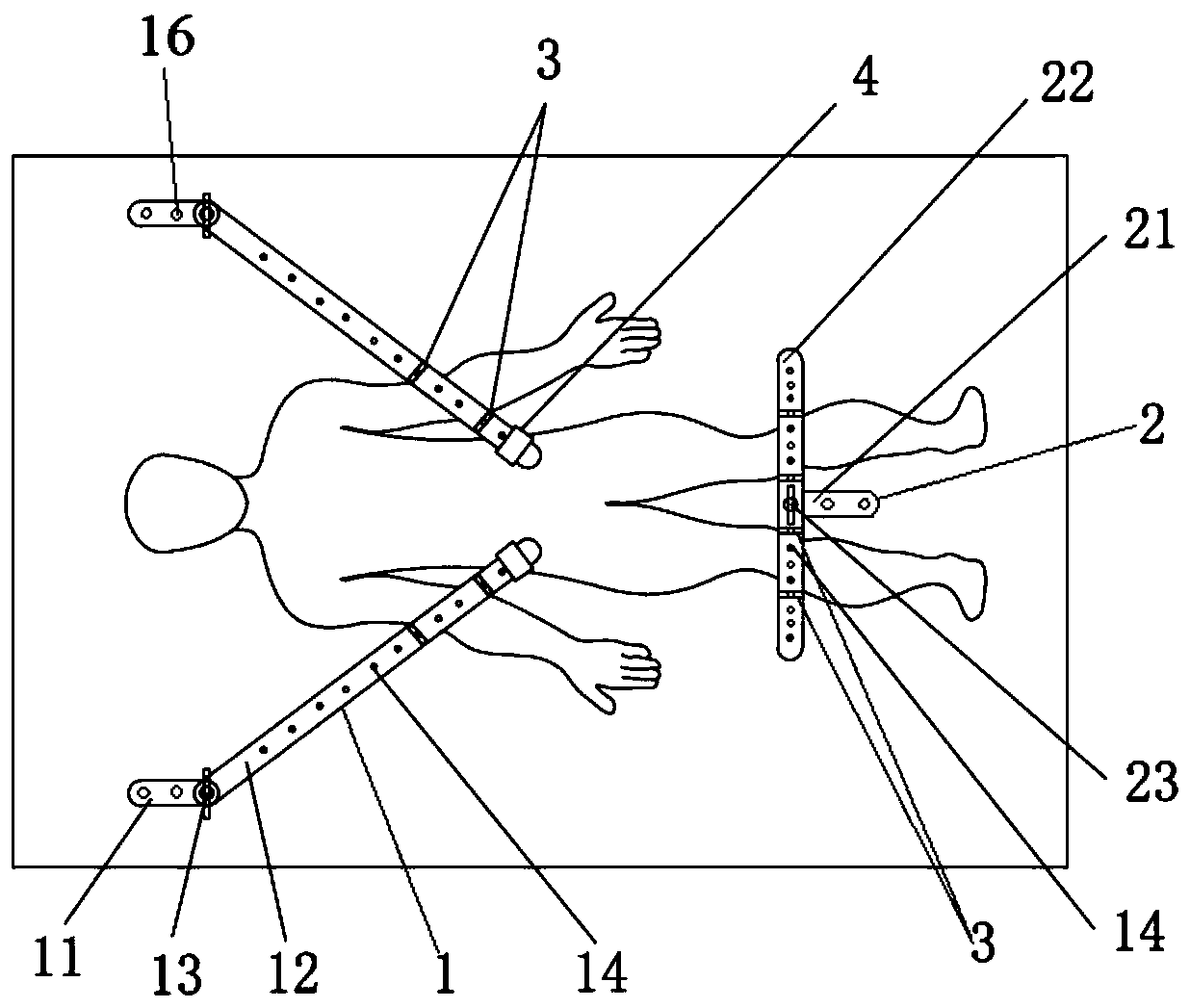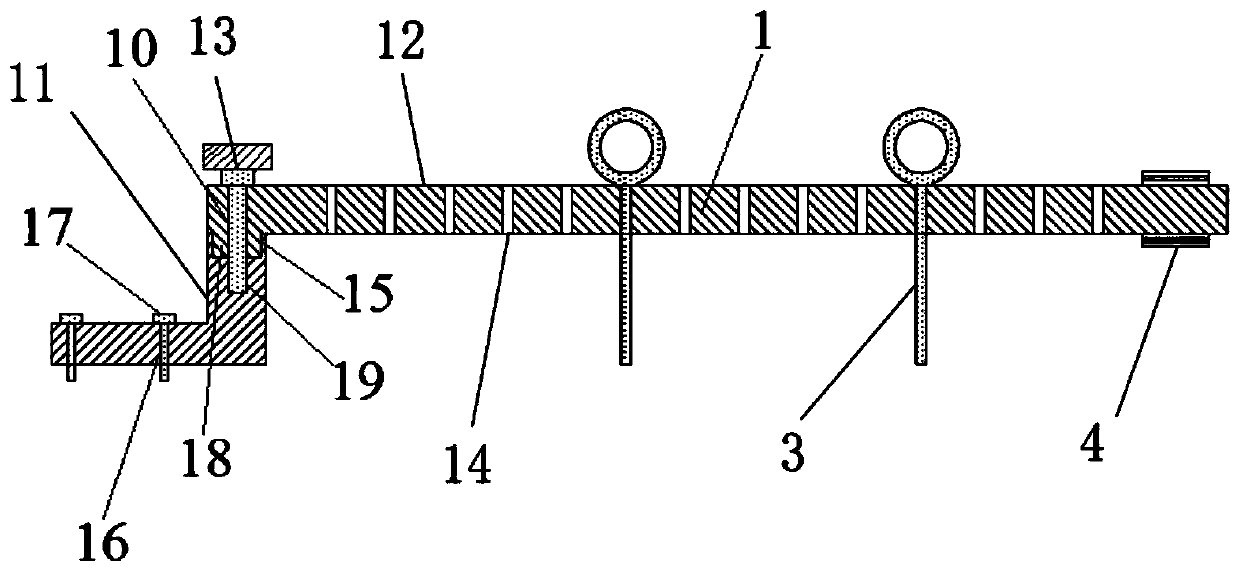Body position constraint device in CT (computed tomography) inspection
A restraint device and body position technology, which is used in patient positioning for diagnosis, medical science, and instruments for radiological diagnosis, etc., can solve the problems of insufficient flexibility and difficult adjustment of the position of the restraint belt, and achieves the effect of high flexibility of the device
- Summary
- Abstract
- Description
- Claims
- Application Information
AI Technical Summary
Problems solved by technology
Method used
Image
Examples
Embodiment 1
[0040] Please see attached figure 1 , attached figure 2 , with figure 1 It is a schematic diagram of the assembly front plane of a CT examination body position restraint device of the present invention; figure 2It is a three-dimensional schematic diagram of each basic component of a CT examination body position restraint device of the present invention. A posture restraint device for CT examination, comprising two upper limb positioners 1 and one lower limb positioner 2, the upper limb positioner 1 includes an upper fixed base 11, an upper rotating part 12, an upper locking part 13, four limit inserts Rod 3, the upper rotating part 12 is an elongated cylinder structure, and a number of equidistantly distributed limiting holes 14 are arranged on it. The limiting insertion rod 3 is composed of a closed ring and a cylinder, and the cylinder It can pass through the limit hole 14, and one end of the upper rotating part 12 is also provided with a first connecting part 15, and t...
Embodiment 2
[0044] This embodiment is basically the same as Embodiment 1, except that the structure of the upper fixing base 11 and the lower fixing base 21 are different. Please see attached Figure 5 , with Figure 5 It is a cross-sectional schematic diagram of the lower limb positioner described in another CT examination postural restraint device of the present invention. The structure of the lower fixed base 21 becomes a cylinder and is arranged at the center of the flat cylinder. The screw holes 16 on the flat cylinder are symmetrically distributed on both sides of the upper cylinder. The change of its structure does not affect the positioning of the device. and solid performance. This embodiment illustrates that the preferred components of the present application with the same structure may have different structures, subject to the realization of their functions and effectiveness.
Embodiment 3
[0046] Please see attached Figure 6 , with Figure 6 It is a three-dimensional schematic diagram of the upper limb positioner described in another CT examination body position restraint device of the present invention. This embodiment is basically the same as Embodiment 1, the difference is that the upper rotating part 12 is composed of a first body 121 and a second body 122, and the second body 122 slides between the first body 121 connected, and the second body 122 can be hidden inside the first body 121, the position where the second body 122 is connected to the first body 121 is also provided with fastening bolts 123 and corresponding bolt holes 124 ( not shown in the figure), and the second body 122 can overlap and communicate with the limiting hole 14 on the first body 121 . It should be noted that: the upper rotating part 12 is formed by slidingly connecting the first body 121 and the second body 122, and the length of the upper rotating part 12 can be adjusted freel...
PUM
 Login to View More
Login to View More Abstract
Description
Claims
Application Information
 Login to View More
Login to View More - R&D
- Intellectual Property
- Life Sciences
- Materials
- Tech Scout
- Unparalleled Data Quality
- Higher Quality Content
- 60% Fewer Hallucinations
Browse by: Latest US Patents, China's latest patents, Technical Efficacy Thesaurus, Application Domain, Technology Topic, Popular Technical Reports.
© 2025 PatSnap. All rights reserved.Legal|Privacy policy|Modern Slavery Act Transparency Statement|Sitemap|About US| Contact US: help@patsnap.com



